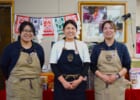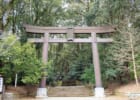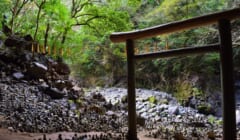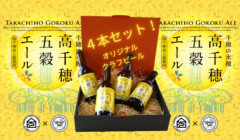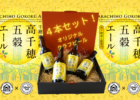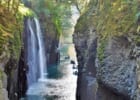
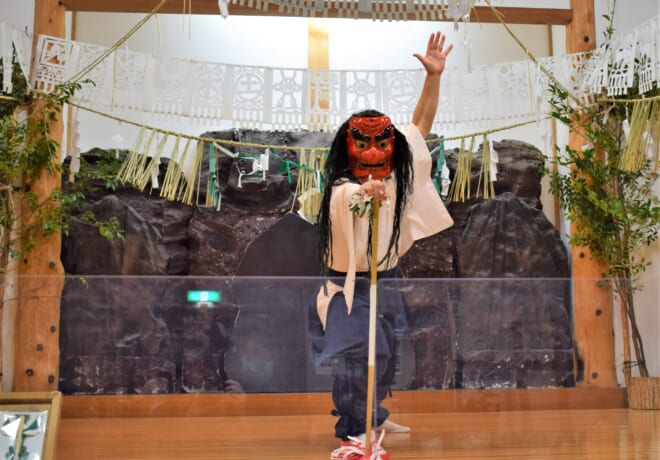
[Recommended for overnight visitors] A guide to experience the must-see Takachiho kagura
- 0 お気に入り
- 4334 view
- お気に入り登録

The Takachiho kagura is performed at night, known as night kagura or “yokagura”. It is a traditional Shinto ritual that is being held every year in 19 villages within Takachiho, from mid-November to February of the following year. It is a ritual that has been passed down from the Heian Period(794 – 1185), and has been designated as a Important Intangible Folk Culture Property of Japan.
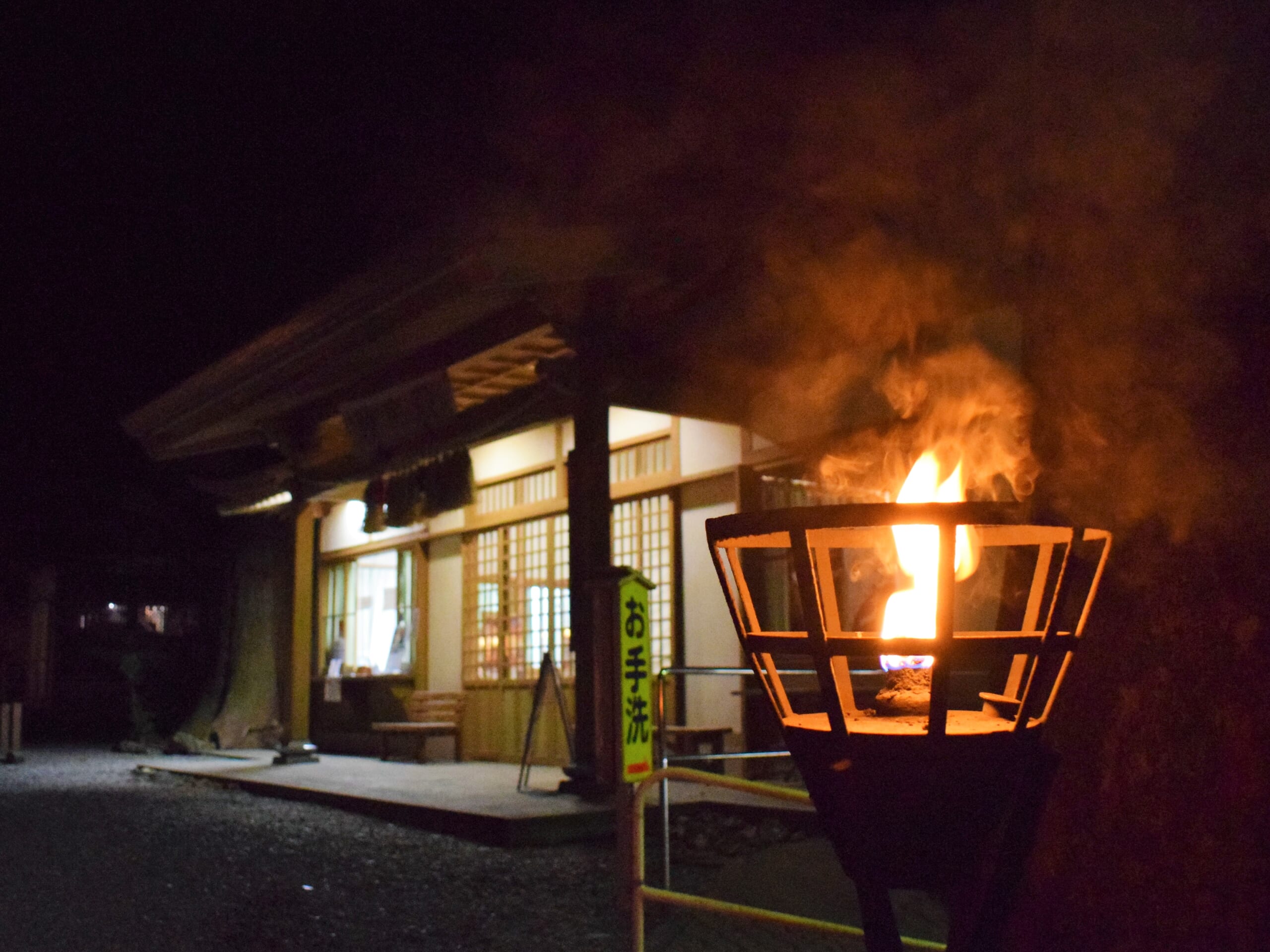
The Takachiho kagura allows visitors a way to enjoy the Takachiho yokagura year-round, even outside of the yokagura season. The one-hour performance, held every night at 8:00 P.M. at Kagura Hall on the grounds of Takachiho Shrine, features the four most well-known of the total 33 dances of the yokagura.
Takachiho Shrine
https://takachiho-kanko.info/sightseeing/5/
How to watch the Takachiho kagura
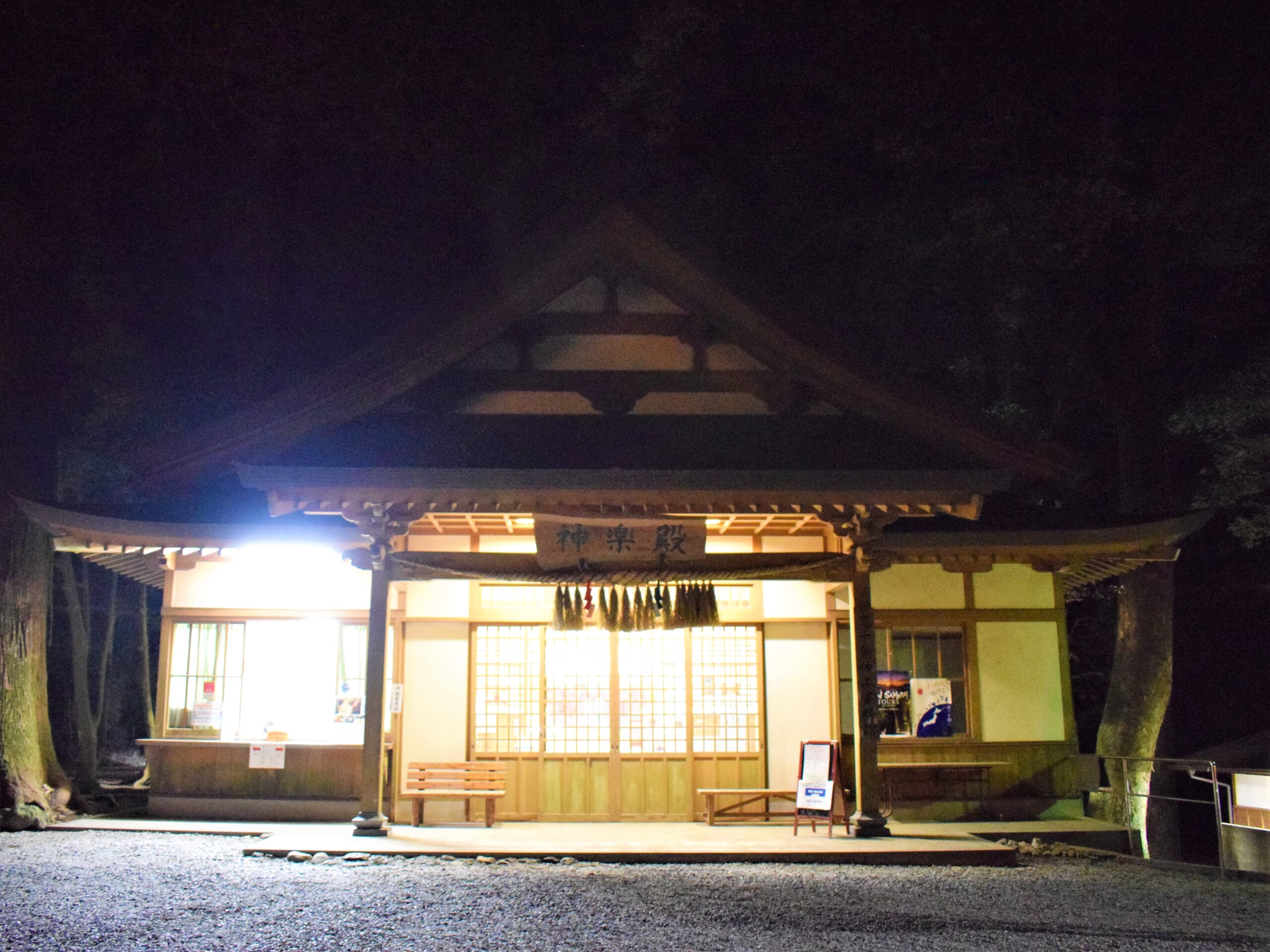
The venue for the Takachiho kagura performance is the Kagura Hall(神楽殿), located on the grounds of Takachiho Shrine. If you travel by car you use the Takachiho Shrine parking lot.
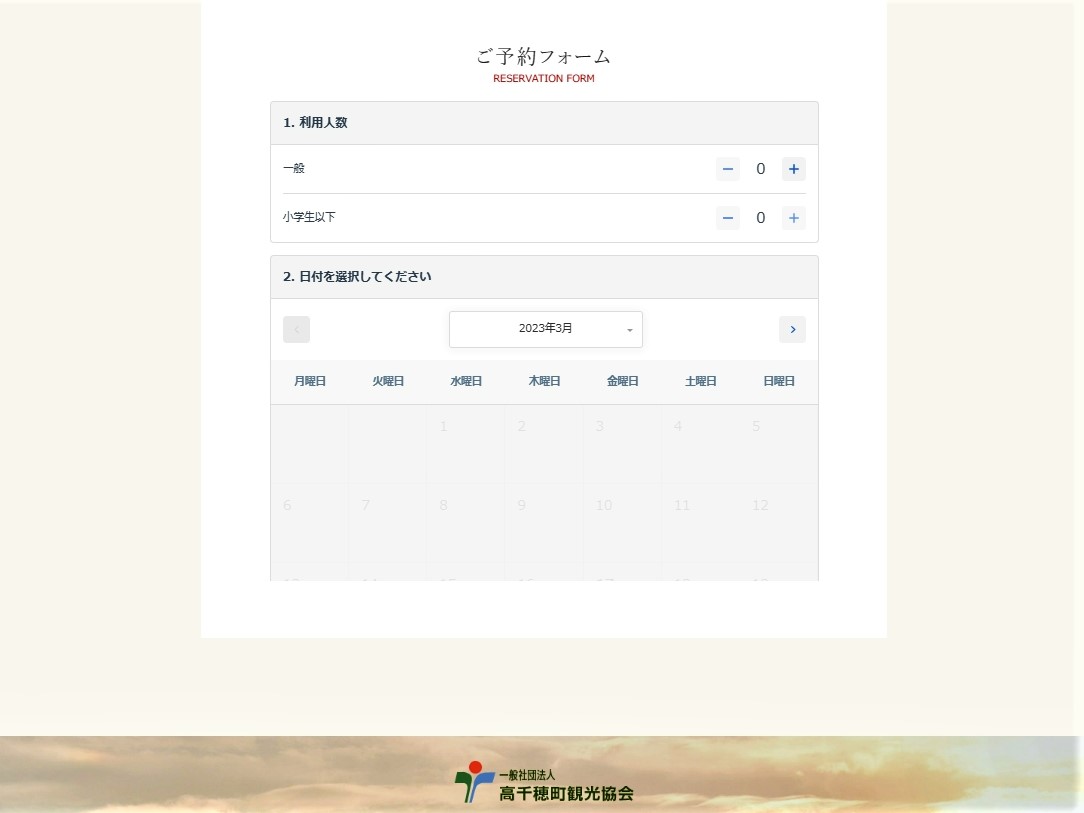
The admission fee is 1,000 yen, with tickets available for purchase at Kagura Hall from 7:00 P.M. Note that online tickets can be purchased up to one month in advance, until 5:00 P.M. on the day of the performance. We recommend that you buy tickets in advance if you already have a date in mind.
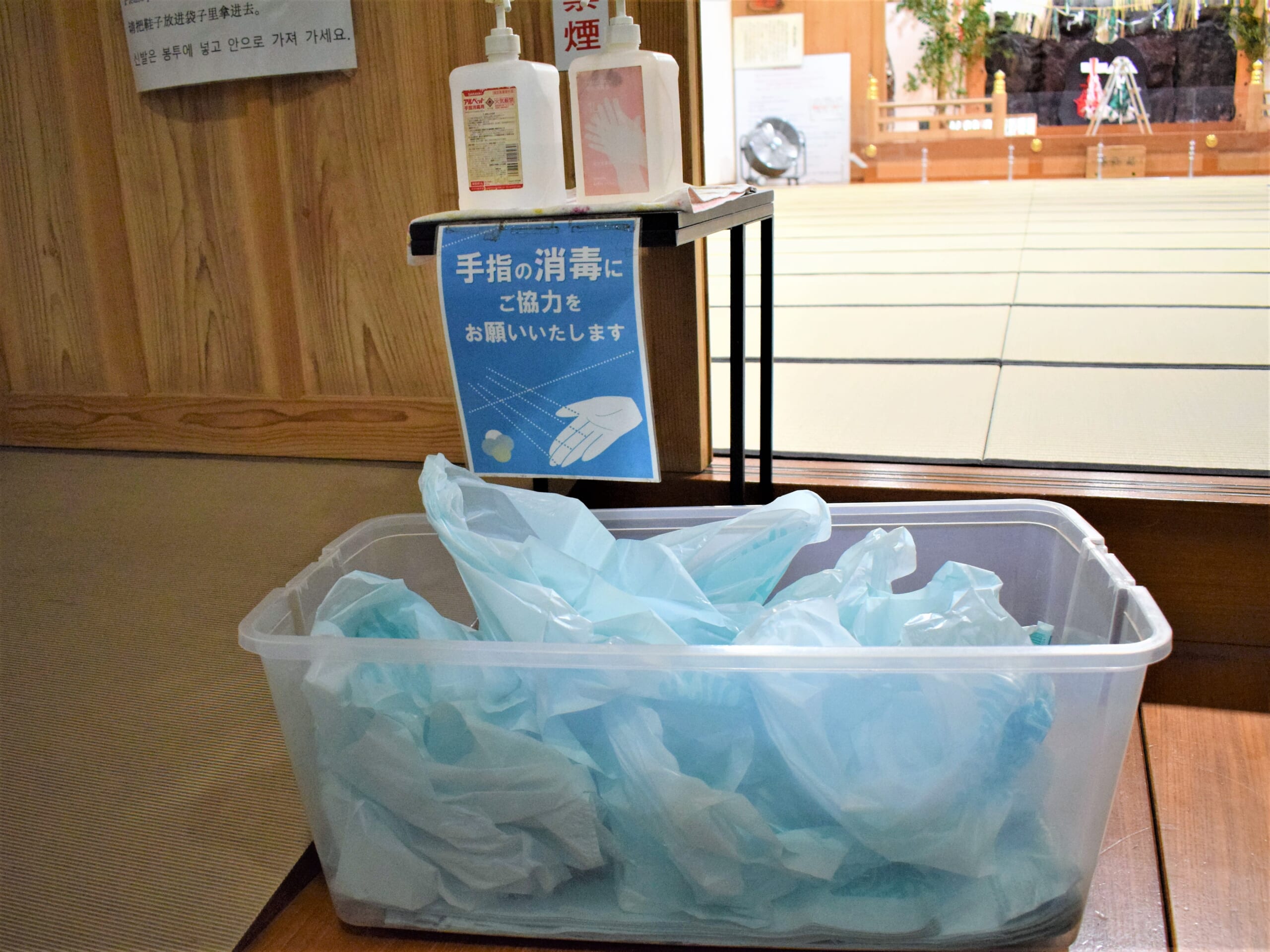
Be sure to take off your shoes when entering the hall. There are shoe bags placed near the entrance of the hall. Place your shoes in a bag and bring them with you.
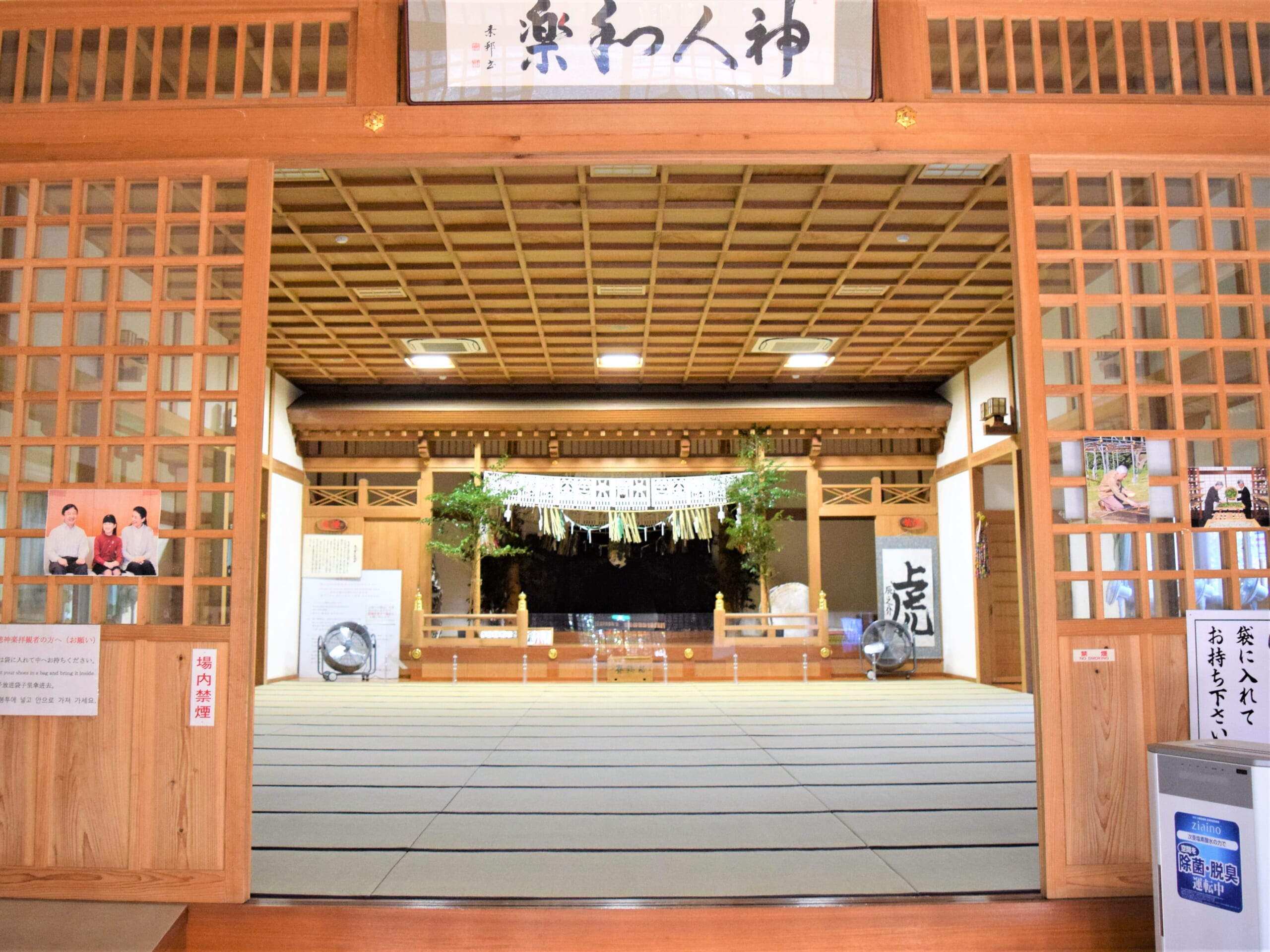
The inside of Kagura Hall has tatami flooring (traditional Japanese straw-based flooring), and visitors will sit on the tatami mats to watch the performance. Many hotels and ryokan (traditional Japanese inns) in the vicinity rent out zabuton (Japanese floor cushions). We encourage you to ask around if you would like to rent one.
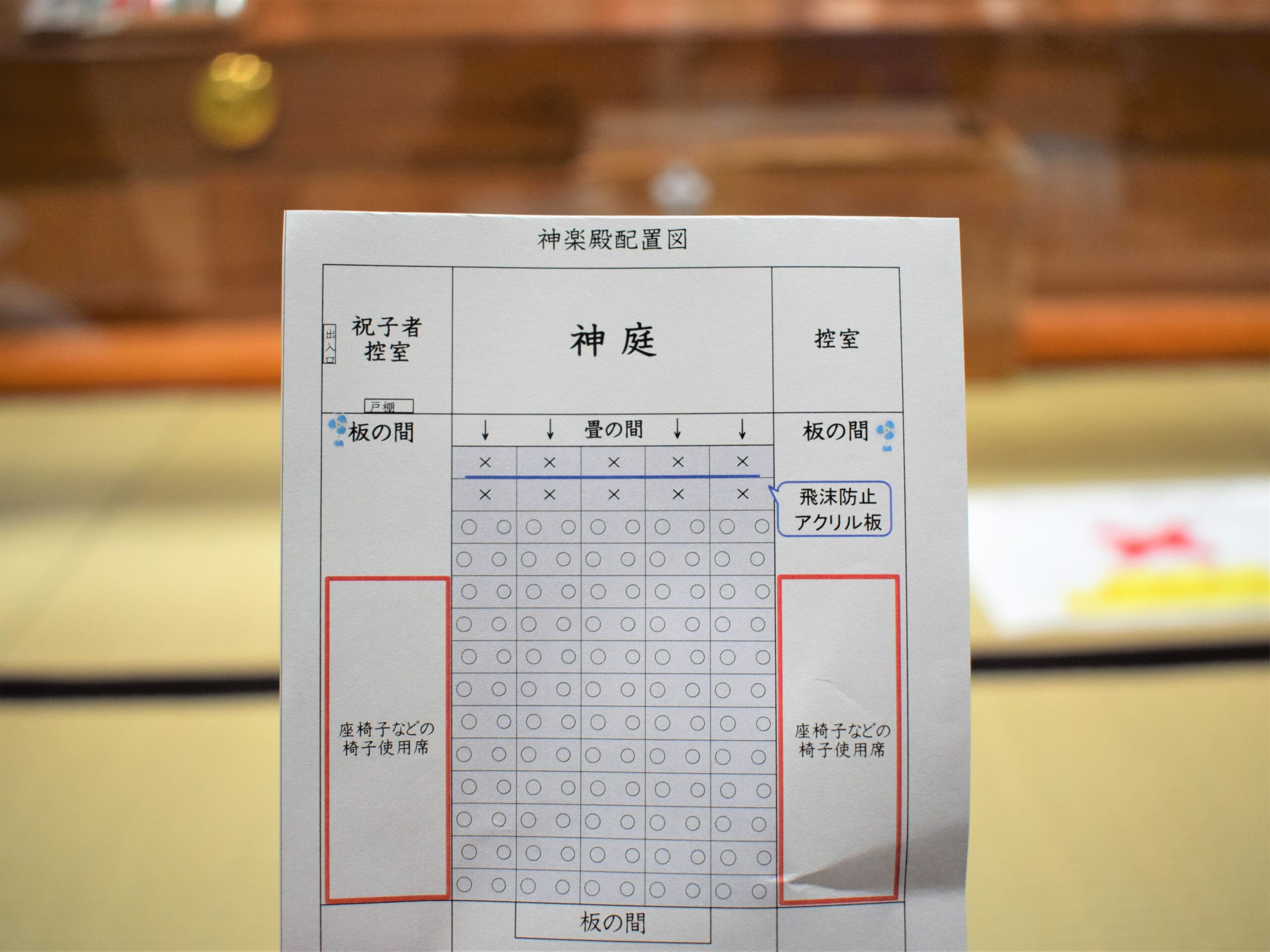
While there is a seating limit of two people per tatami mat, there are no seating assignments. We recommend you arrive early if you want to secure a good seat (naturally, the front seats are the best ones).
Click here for reservations for Takachiho Kagura!
https://takachiho-kanko.info/kagura/information/
The highlights of the Takachiho kagura
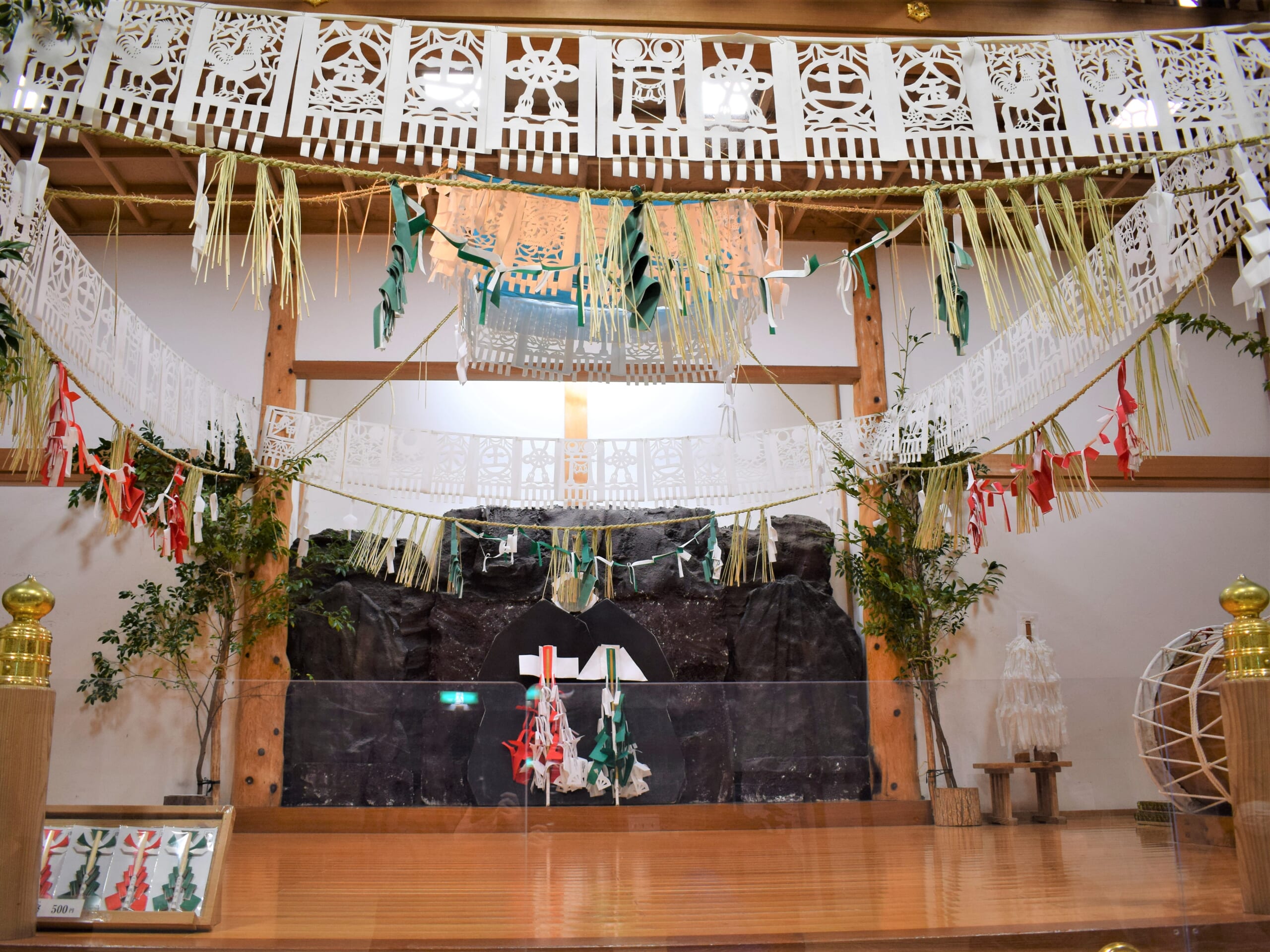
Kagura stages are called “kouniwa” (sacred spaces) and are decorated with paper cutouts called “erimono”.
At the center of the ceiling is something called a “kumo” (cloud), which when lowered at the end of the yokagura ritual is said to fulfill various wishes.
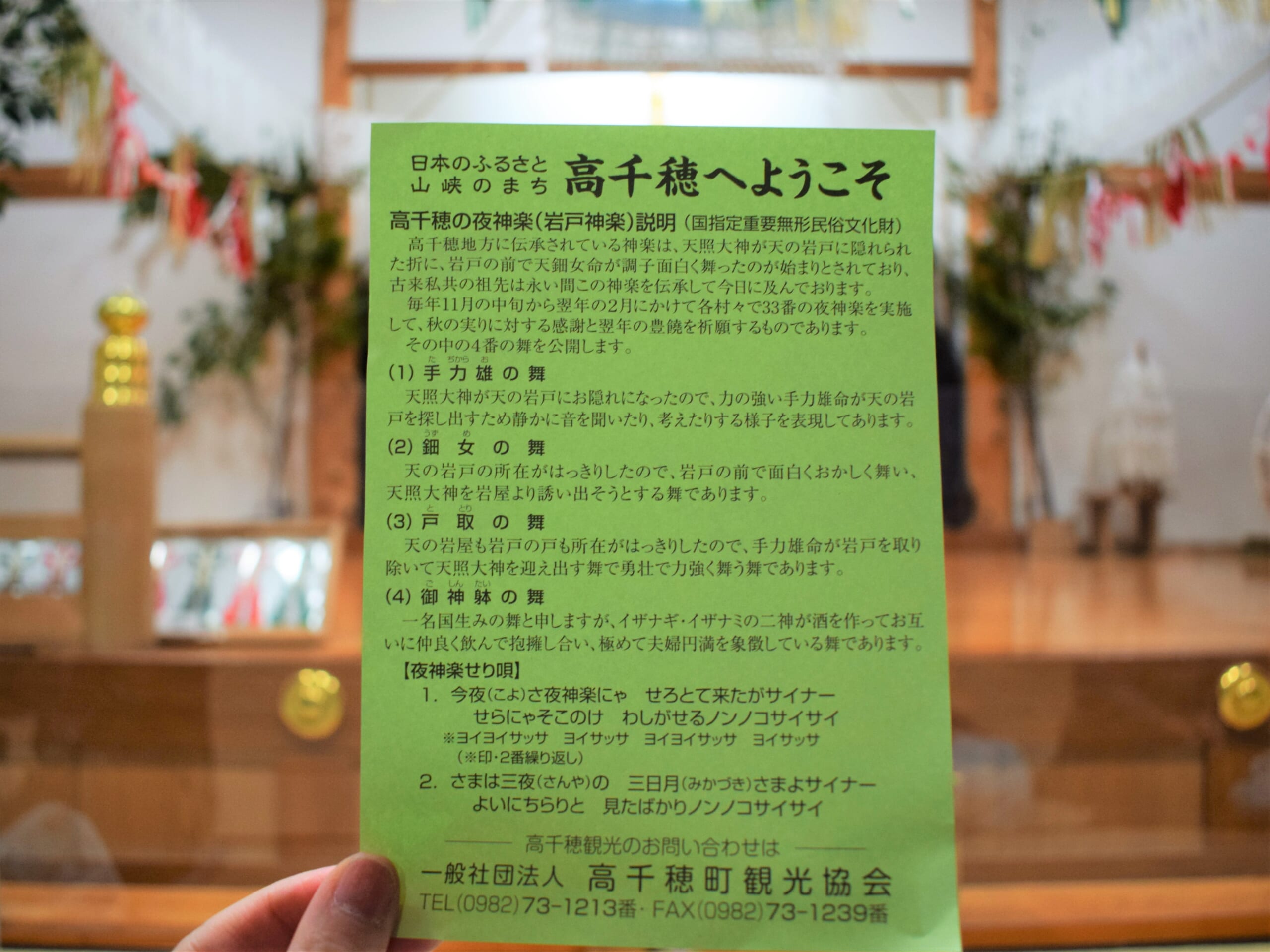
While there are a total of 33 dances in the yokagura, the ones performed in the Takachiho kagura are the four most well-known. These are focused mainly on the Amano-Iwato legend.
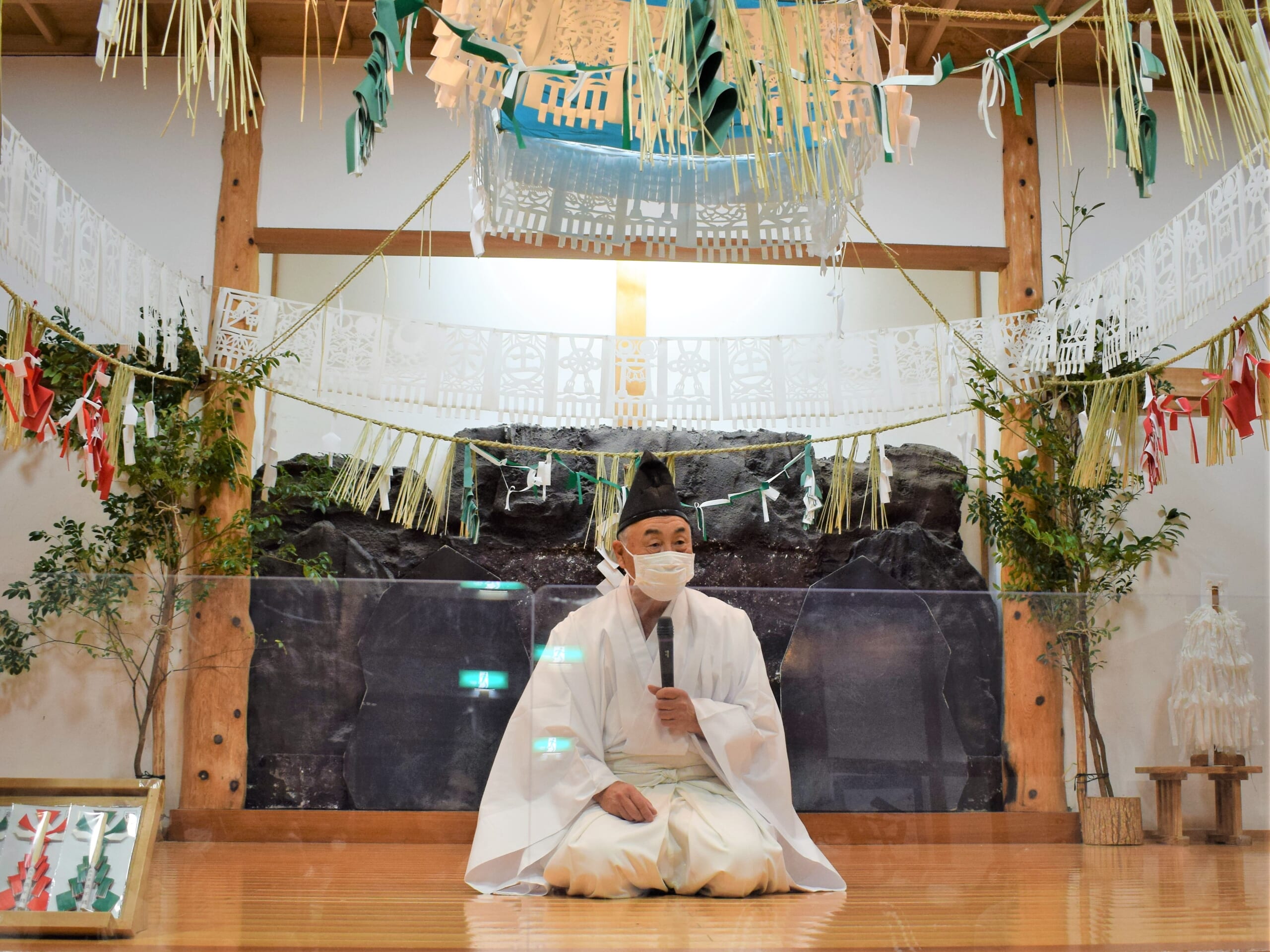
Kagura dancers from each village in Takachiho take turns performing and dedicating the nightly Takachiho kagura to the gods. The stories that are told in between the dances are also quite interesting, and makes you curious as to what kinds of stories that are begin told by the other villages.
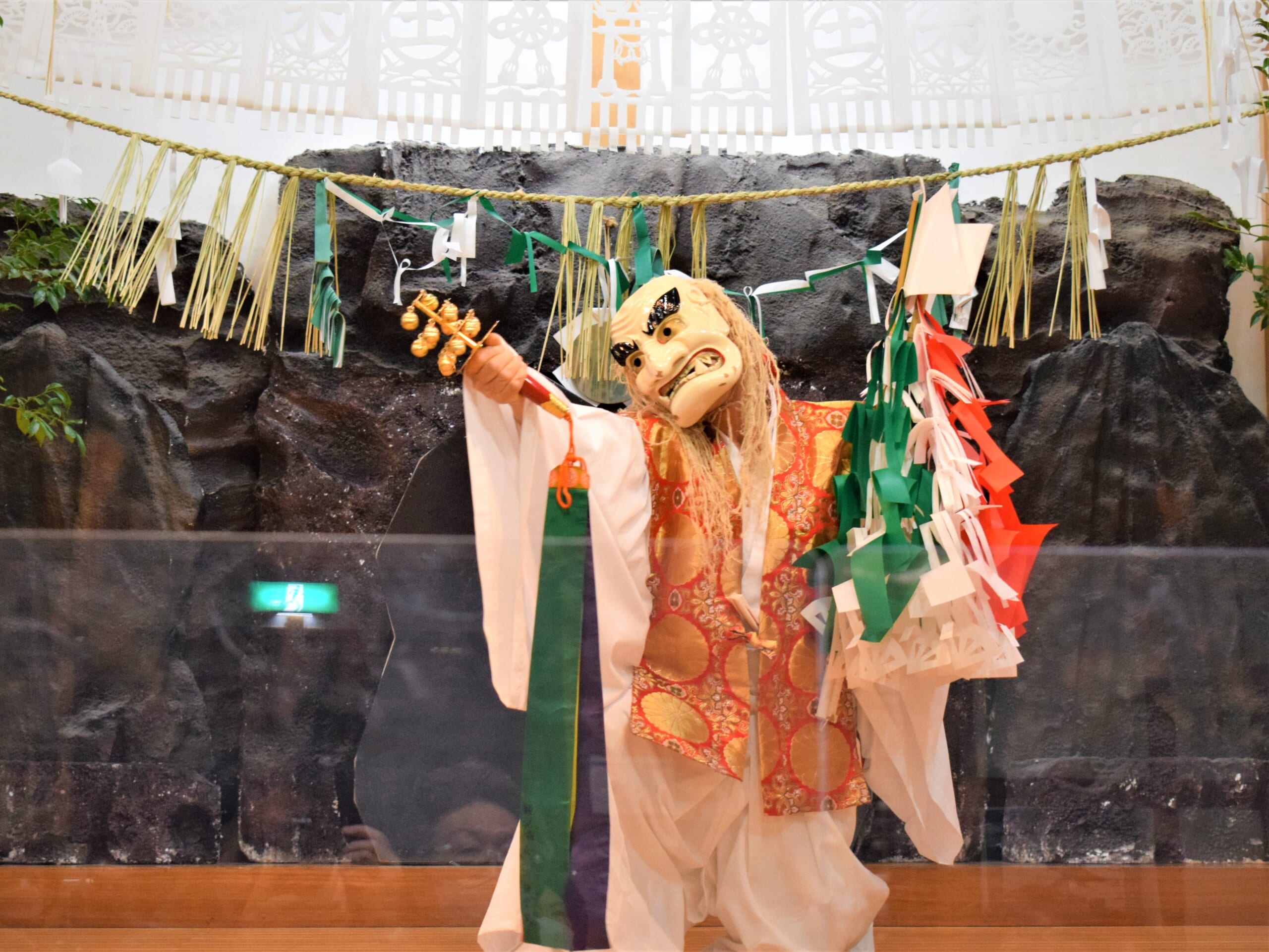
In “The Dance of Tajikarao” (手力雄の舞), Ame-no-Tajikarao is searching for the cave in which Amaterasu-Omikami has hidden herself, listening quietly for sounds and thinking to himself.
This is the 24th dance of the Takachiho yokagura.
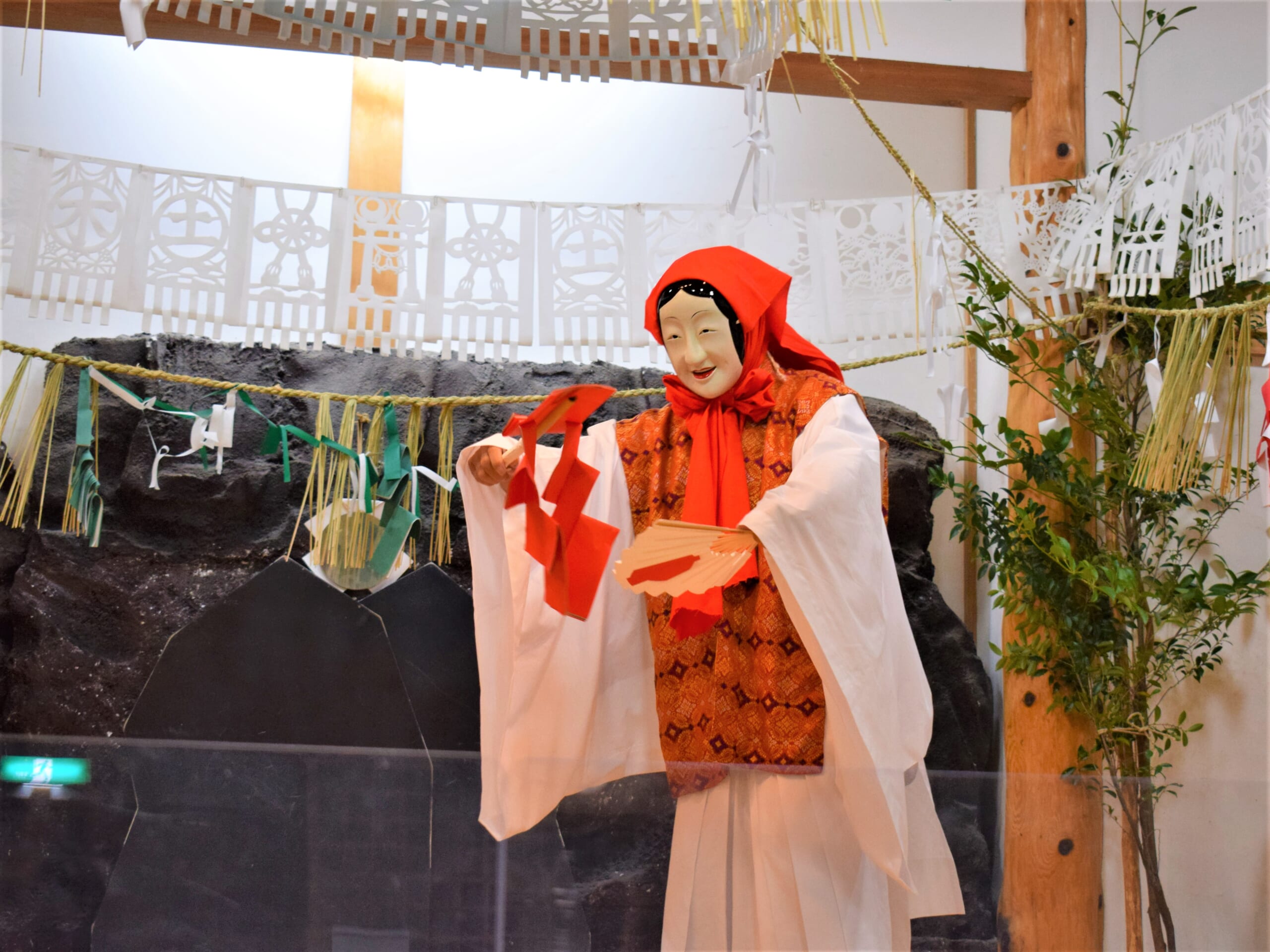
In “The Dance of Uzume” (鈿女の舞), Ama-no-Uzume performs a amusing dance in front of Amano-Iwato Cave, in an effort to get Amaterasu-Omikami to come out of the cave. This is the 25th dance of the Takachiho yokagura.
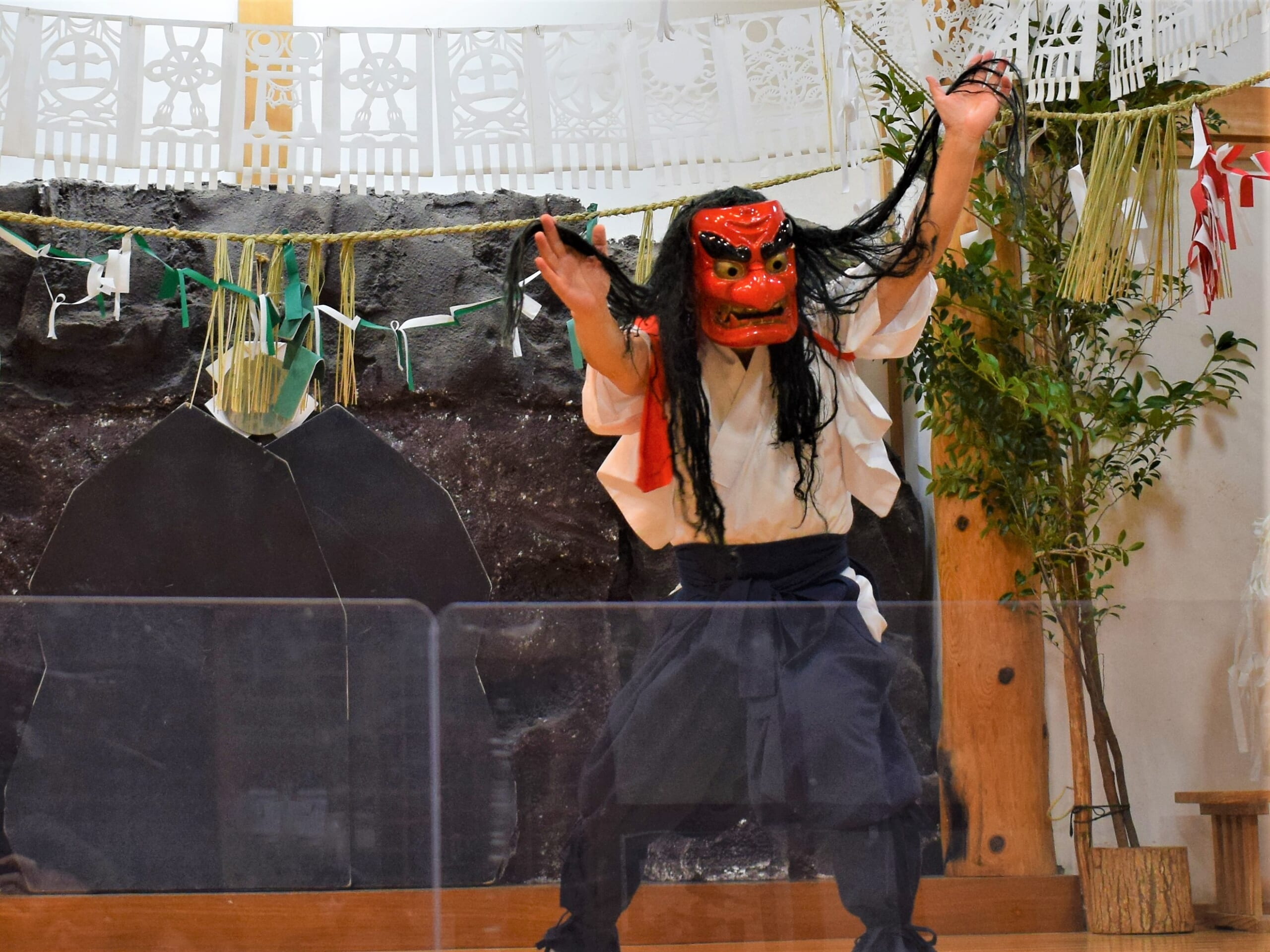
In “The Dance of Totori” (戸取の舞), Ame-no-Tajikarao pushes open the rock at the entrance of the cave, and welcomes Amaterasu-Omikami as she emerges from the cave. This is the 26th dance of the Takachiho yokagura.
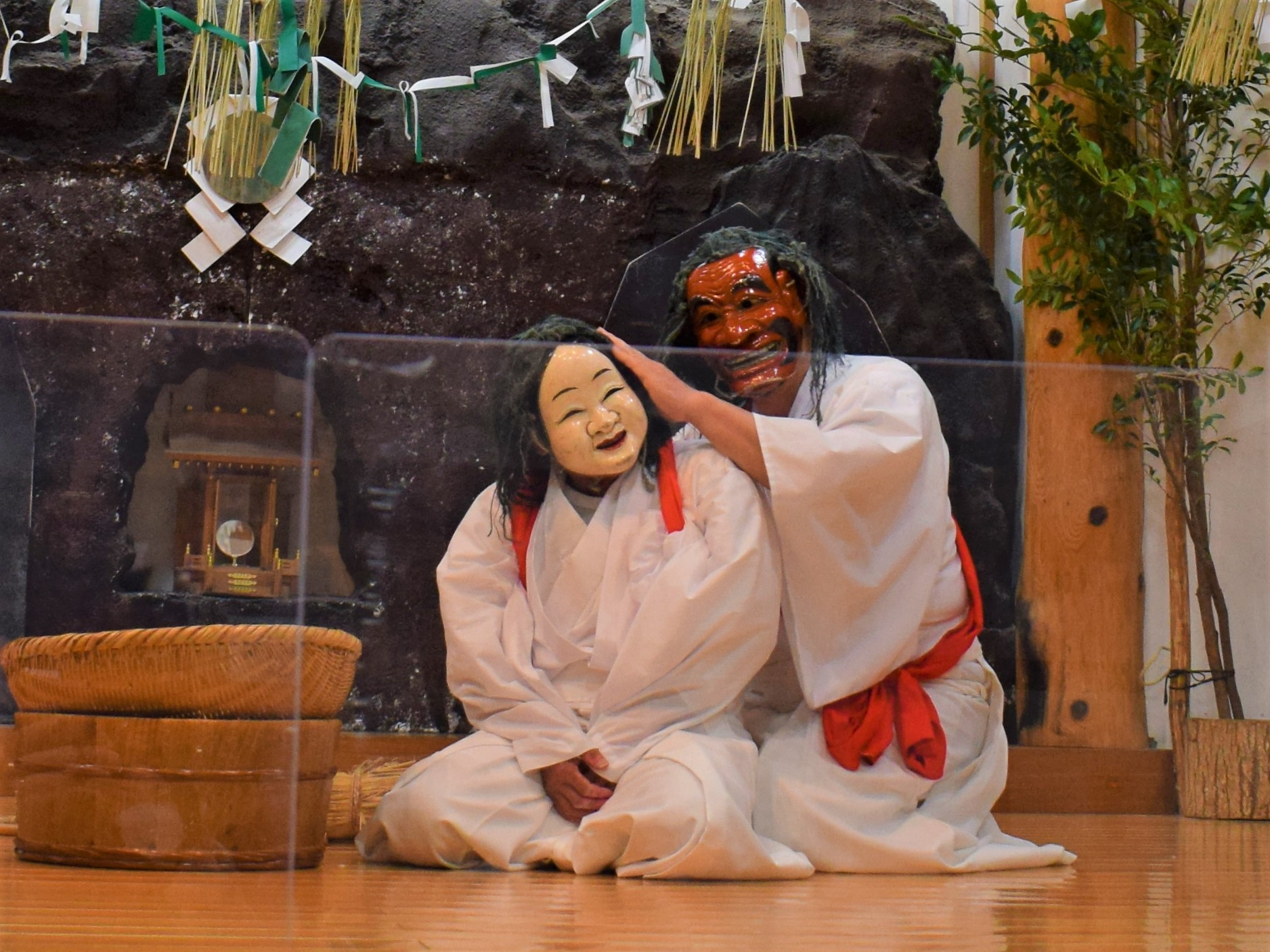
Finally, in “The Dance of Goshintai” (御神躰の舞), Izanagi-no-Mikoto and Izanami-no-Mikoto brew sake from fresh rice grains and offer it to the gods. When taste checking the sake they end up drinking it while embracing each other.
This is the 20th dance of the Takachiho yokagura.
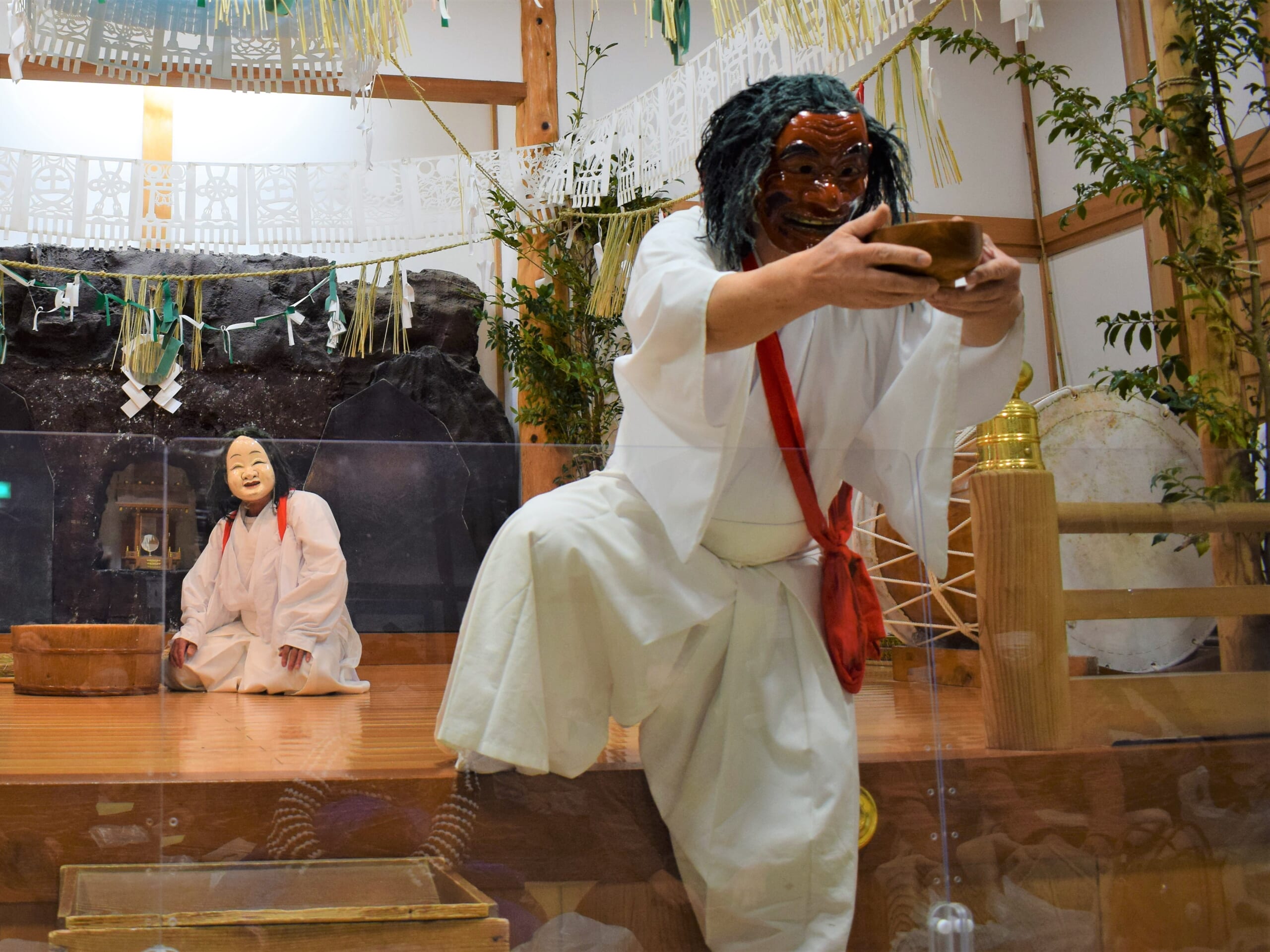
For “The Dance of Goshintai,” the kagura dancers come down to where the audience is sitting so the guests can join in on the excitement. If you’re asked to participate, go on—don’t be shy!
Get even more out of the Takachiho kagura
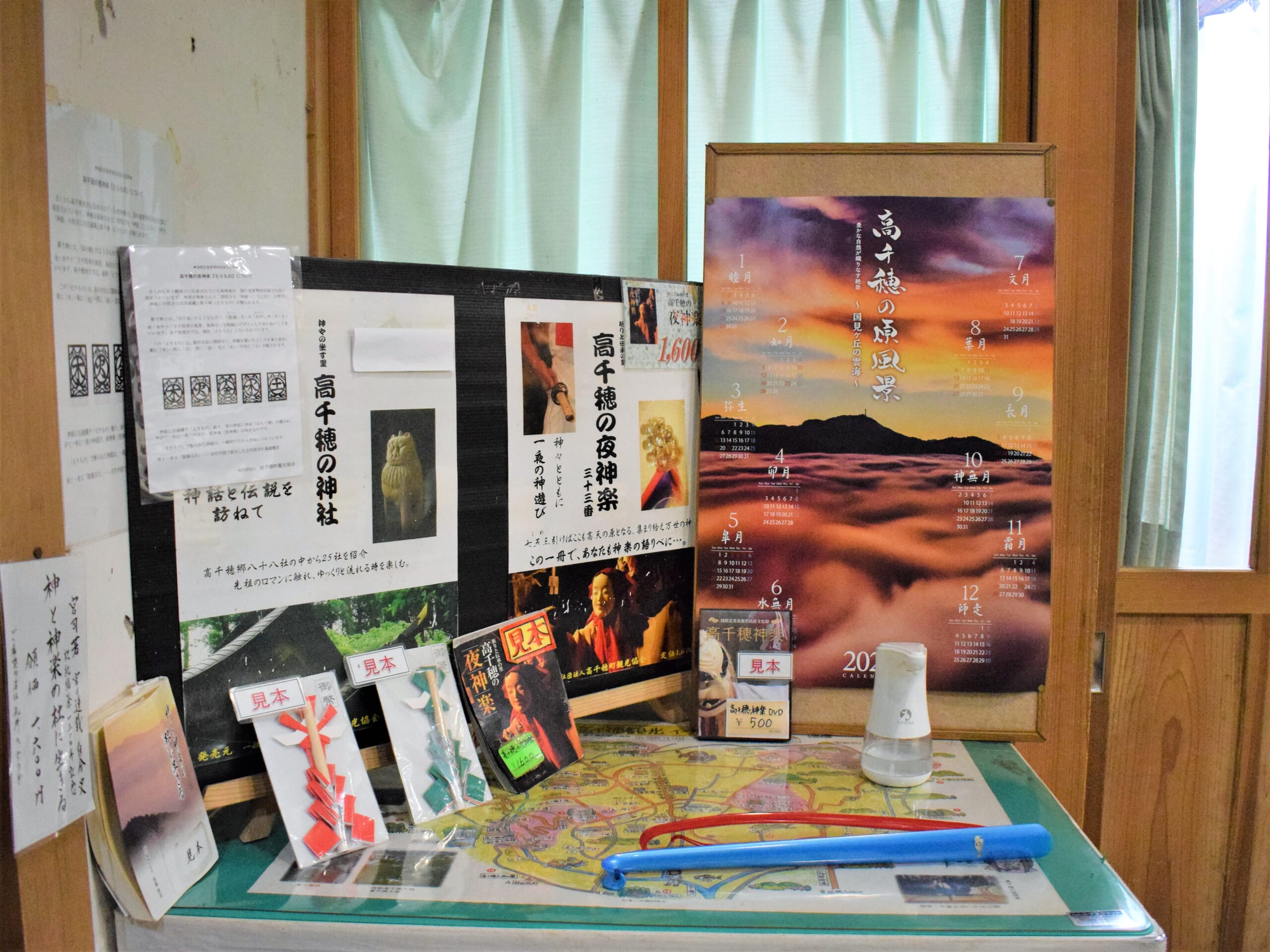
Near the entrance to Kagura Hall is a corner where you can buy gohei (wooden wands decorated with paper streamers, used in Shinto rituals), as well as DVDs and books on the yokagura.
We recommend this as you will find some souvenirs that are only available for purchase here!
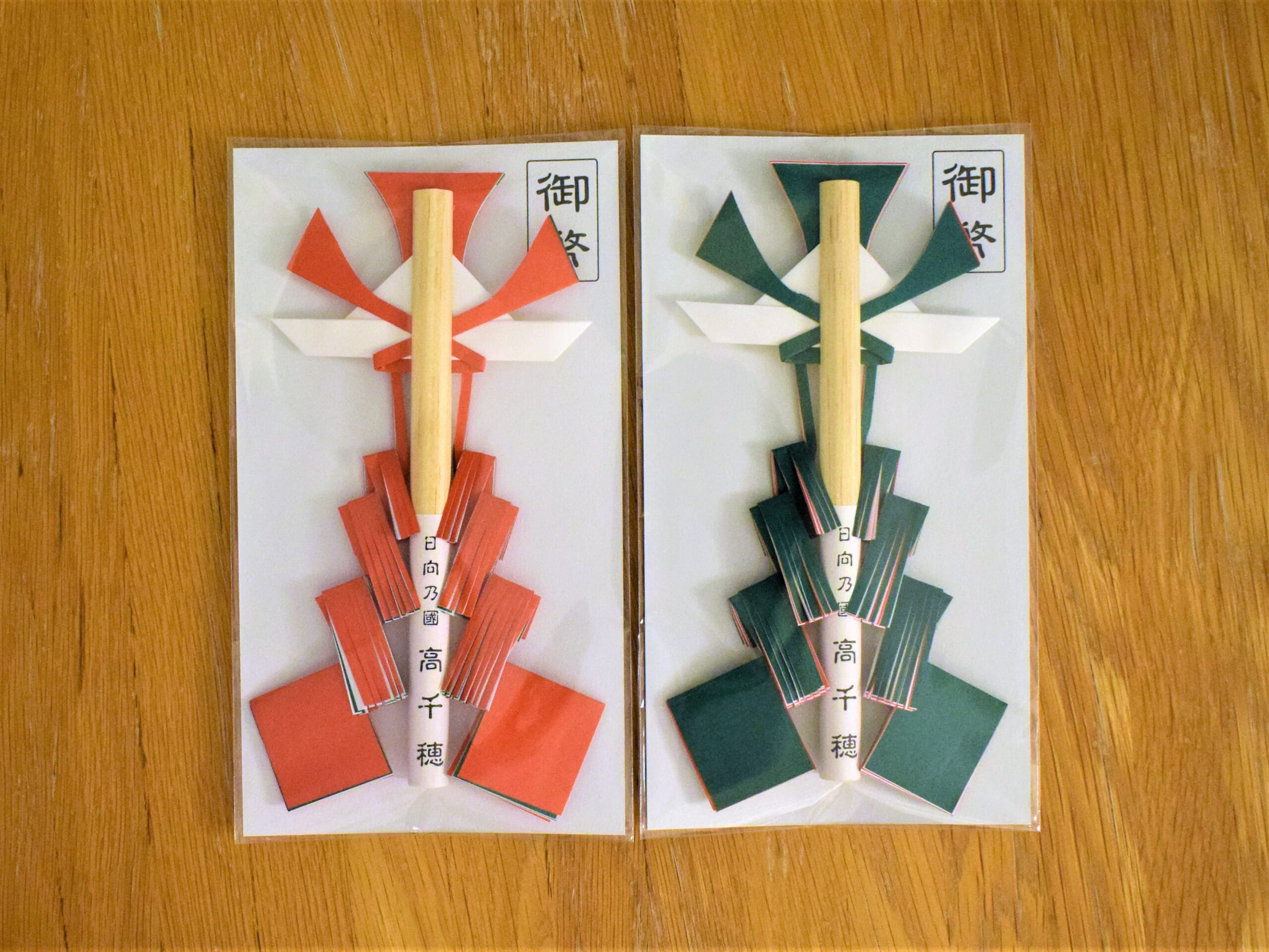
The Gohei, which are used in “The Dance of Tajikarao,” are said to be a dwelling place for the gods, with green streamers representing the god of water and the heavenly realm, and red streamers representing the god of fire and the earth.
They are offered on Shinto altars and other ritual locations in order to pray for safety, health, good fortune, and more.

If you are interested in the yokagura, we recommend this book in particular. It contains explanations as to yokagura customs and the 33 dances, as well as make an excellent kagura photo book.
Conclusion
What do you think about this guide to the Takachiho kagura?
The Takachiho kagura is a must-see Shinto ritual, a tradition that dates all the way back to the Heian Period and should be seen at least once when visiting Takachiho.
If you are a overnight visitor it is the perfect way to get some quality time after dinner.
If you want to see the yokagura that the various villages dedicate to the gods in their respective festivals, just go to Kagura yado and register as a “one-night shrine visitor,” to be given access to the festivities. Definitely participate if you want to see more of the yokagura.
 関連の記事
関連の記事
 コンシェルジュからのおすすめ
コンシェルジュからのおすすめ
お客様のご要望に沿ったおすすめの観光情報・宿(ホテル 旅館)・レストラン・居酒屋・カフェ・ショップ等をコンシェルジュスタッフが厳選してご紹介しております。





